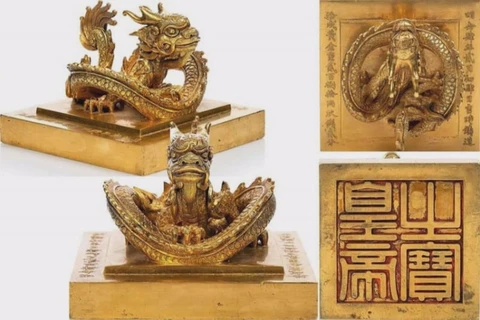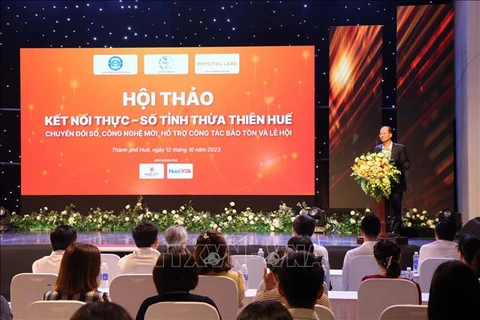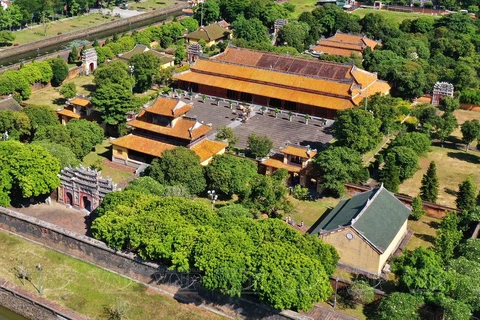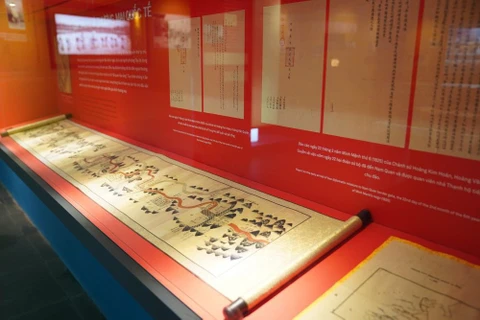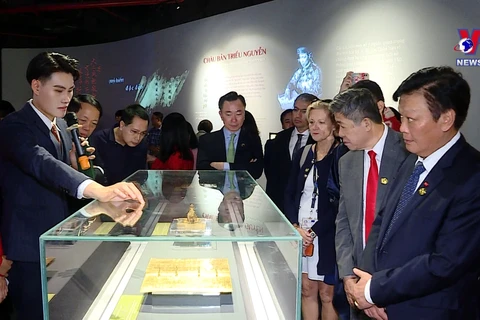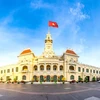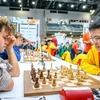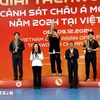
Hanoi (VNA) - The Nine Dynastic Urns placed in front of the The Mieu Yard in the Hue Imperial Citadel have long become important objects of many domestic and international researchers.
At the 10th plenary conference of the Memory of the World Committee for Asia and the Pacific held in Mongolia, the urns were inscribed in the Memory of the World Register.
During the session on May 8, 2024, the conference focused on reviewing 20 documents that hold multifaceted value and adhere to criteria such as regional significance, uniqueness, and rarity.
Because of their unique value in terms of information recorded on the vessels, the urns received unanimous votes by all 23 member countries.
The Nine Dynasty Urns were cast for two years, from 1835 to 1837 at the time of the King Minh Mang – in front of the The Mieu Yard.
National treasures
King Minh Mang ordered the production and casting of the urns in December 1835. More than a year later, the work was completed and continued to be refined.
Going through 200 years, all the royal urns still stand in their original placements and remained intact through wars.
These are original and unique copies. Since their formation, the Nine Dynastic Urns have never undergone repair, not even a small detail. Therefore, they have unique original value and are irreplaceable.
The Nine Dynastic Urns were recognized as a National Treasure in the first phase, 2012.
Nine Dynastic Urns - A photo book about Vietnamese biology
The Nine Dynastic Urns are not just a mere decoration but the country’s first illustrated handbook on biodiversity.
Among the 162 embossed motifs on the bronze urns of the Nguyen Dynasty in Hue, up to 90 images illustrate the typical Vietnamese flora and fauna.
They can also be considered a Vietnam Red Book or a list of species in need of protection in ancient times.
Holding international value
The Nine Dynastic Urns are written in Chinese characters and the documents are represented by images bearing names of places, kings’ names, creatures, plants, rivers and mountains. Particularly, they assert the nation’s sovereignty over seas and islands.
The Nguyen Dynasty ruled the Kingdom of Dai Nam, as Vietnam was then known, from 1802 until 1945 with 13 Kings. They include Gia Long as the founding Emperor and Bao Dai, the last one.
Minh Mang, the fourth son of Emperor Gia Long, ruled for 21 years and implemented significant reforms during his reign. Under his leadership, the country’s territory reached its largest extent. In 1838, he made the decision to change the country’s name to Dai Nam, and also renamed Thang Long to Hanoi, a name that has remained until today.
Recognized as National Treasure Relics in 2012, the Nguyễn Dynasty Urns recognition today adds to the 10 heritage sites inscribed on the UNESCO Memory of the World Register in Asia-Pacific. The urns were created with the aspiration of building a strong and stable country for future generations./.
